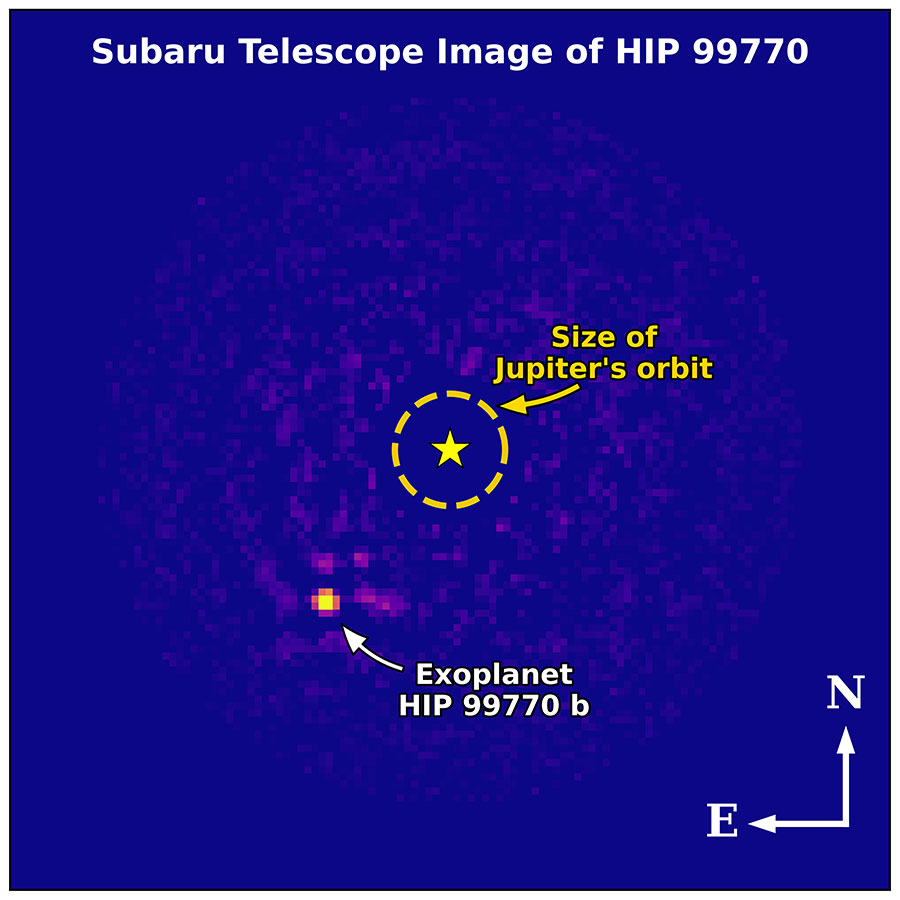
An international team of astronomers announced the first exoplanet discovered through a combined approach of direct imaging and precision measurements of a star's motion on the sky. This new method promises to improve the efficiency of exoplanet searches, paving the way for the discovery of an Earth twin.
To discover exoplanets, planets which orbit stars other than the Sun, by imaging astronomers have up until now used "blind surveys": stars are selected for imaging consider factors such as age and distance but are otherwise unbiased. However, blind surveys find planets very infrequently. Knowing where to look would help increase detection rates.
An international research team led by Subaru Telescope, the University of Tokyo, the University of Texas-San Antonio, and the Astrobiology Center of Japan, searched for hints of unknown planets in the data from the European Space Agency's Gaia mission and its predecessor, Hipparcos. The team identified a star, HIP 99770 located 133 light-years away in the constellation Cygnus, whose motion suggests that an unseen planet is gravitationally pulling on it. Direct imaging observations with the Subaru Telescope detected the planet, HIP 99770 b.
The newly discovered planet is 14-16 times more massive than Jupiter. Its orbit is just over 3 times further from its star than Jupiter is from the Sun. The planet is 10 times hotter than Jupiter, with signs of water and carbon monoxide in its atmosphere.
A decade from now, astronomers hope to image a potentially-habitable planet with a size and temperature like the Earth using observatories like the Thirty Meter Telescope (TMT). Compared with HIP 99770 b, this Earth twin will be smaller and closer to its star, traits that will make it harder to detect. But with precise motion measurements, researchers will know where to look in this game of planetary hide and seek.
These results appeared as Currie et al. Currie et al. "Direct Imaging and Astrometric Detection of a Gas Giant Planet Orbiting an Accelerating Star" in Science on April 13, 2023.






